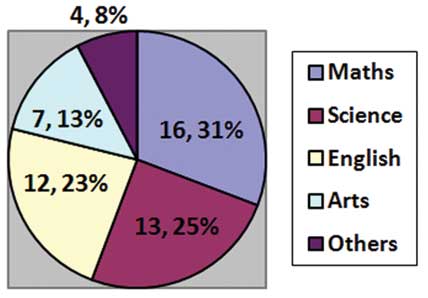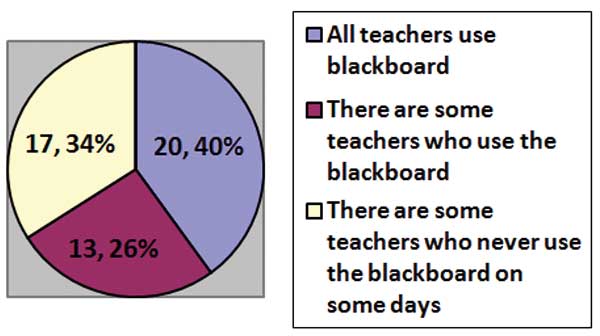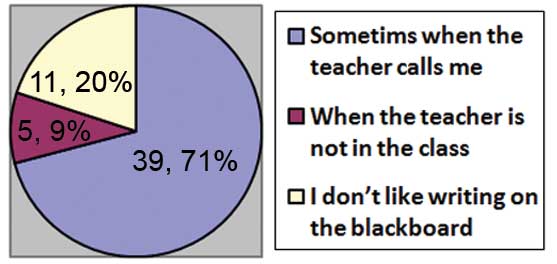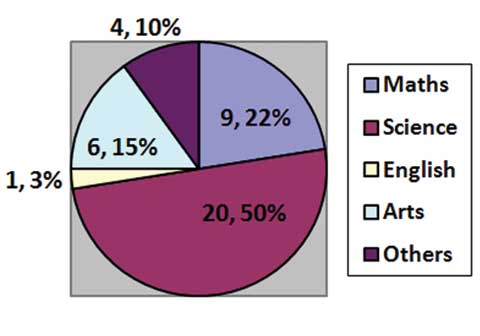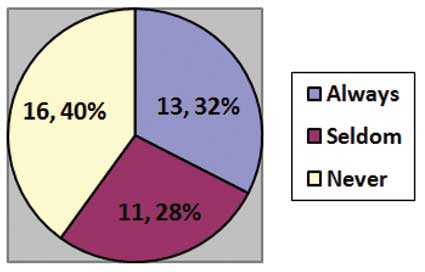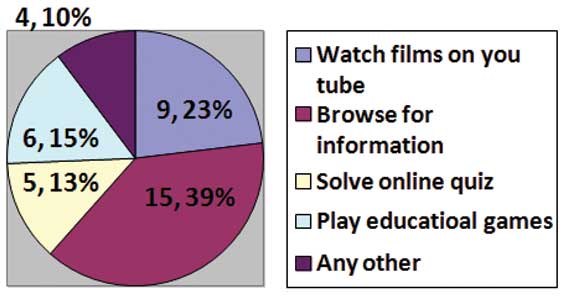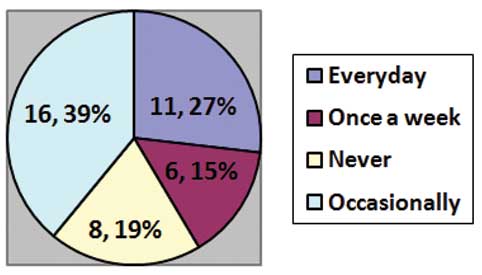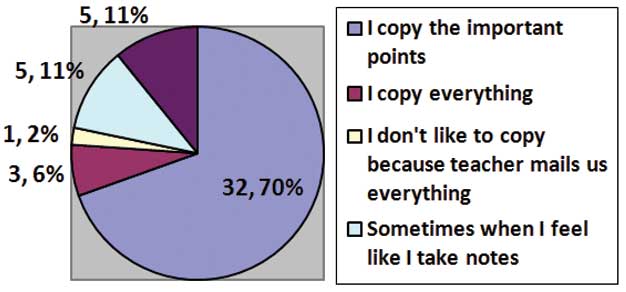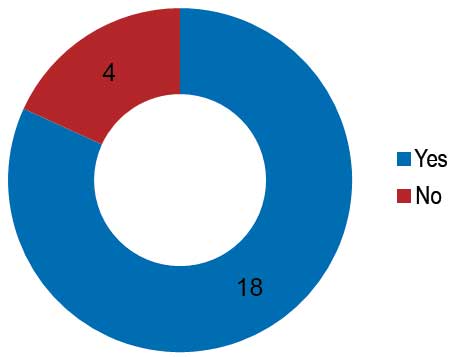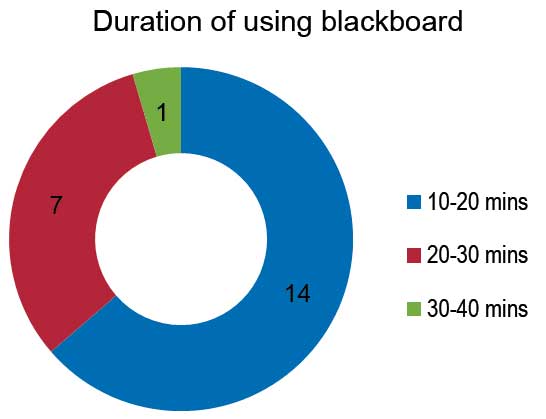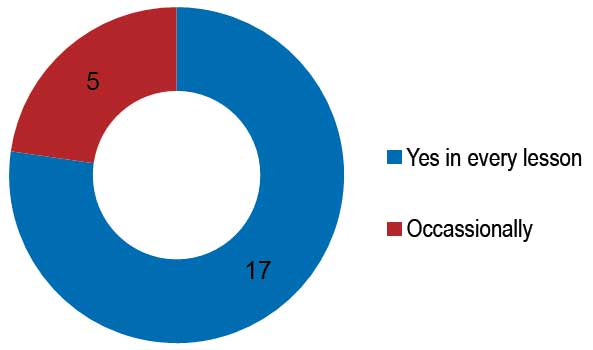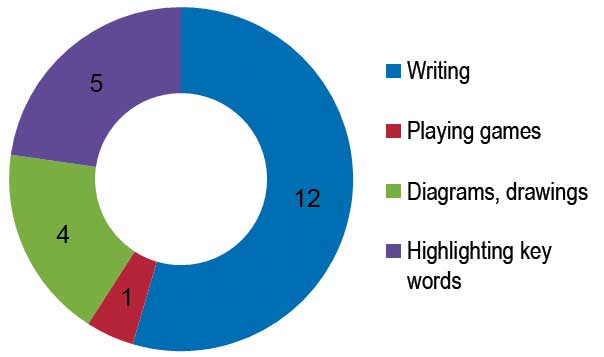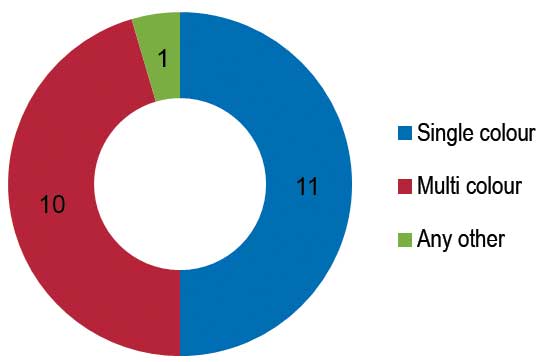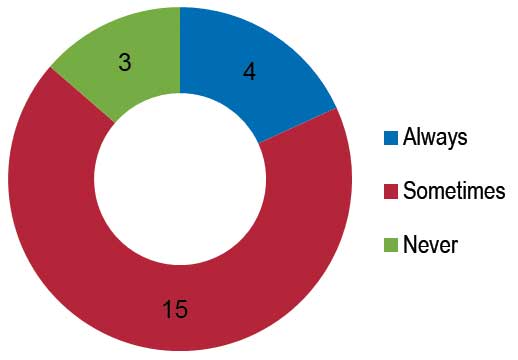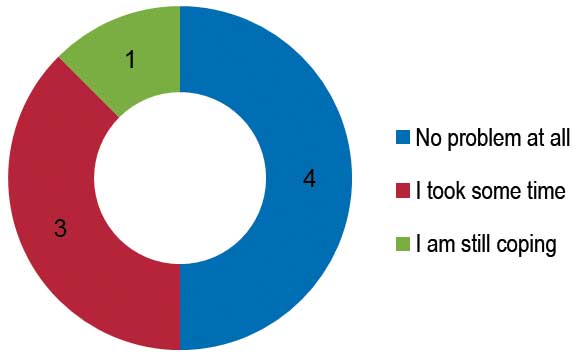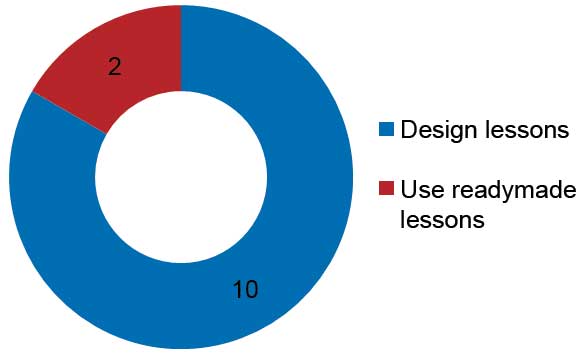Dipankar Bird Chorne
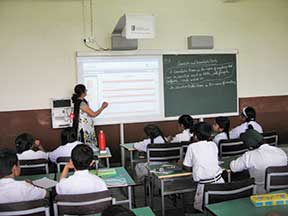 The blackboard is one of the oldest and perhaps the most ubiquitous technology used in education. We often take it for granted and do not make a conscious effort in exploring its full potential in the classroom. In the last 10 years, in our drive towards technology enabled learning, we have almost forgotten the magic that a simple talk and chalk lecture can create in the classroom.
The blackboard is one of the oldest and perhaps the most ubiquitous technology used in education. We often take it for granted and do not make a conscious effort in exploring its full potential in the classroom. In the last 10 years, in our drive towards technology enabled learning, we have almost forgotten the magic that a simple talk and chalk lecture can create in the classroom.
As a post graduate student of media science at iLEAD Institute, Kolkata, I conducted a survey among teachers and students to understand the ways in which the blackboard is used in the classroom, and also how teachers have adapted to the smartboard in schools that have made a transition from blackboards to smartboards. This survey was a part of my research paper in the final semester. Here are some excerpts from the paper:
Uses of a blackboard
- To focus students’ attention
- To display information in a written or graphic form
- To solve problems and generate discussion
- To help arrive at a conclusion while explaining in detail
- To help students connect with what is going on
- To enable students to think about the subject and participate in the discussion
- To show the flow of the lesson process described in the lesson plan
- Is a tool used to connect parts of the lesson coherently together in order to build student understanding
- Is a child centric learning instrument, where by engaging themselves in finding a solution, students learn more actively
About 100 students from different schools were given a questionnaire on the use of the blackboard in their classes. Here are some of the results:
1. Which teacher’s blackboard work do you like the most?
2. Is there any teacher who never uses the blackboard?
3. Do you get a chance to write on the blackboard?
It is clear from this survey that maths and science teachers are most active users of the blackboard. The practice of calling students to the blackboard is fairly prevalent and there are some teachers who do not make full use of the blackboard in the classroom.
The questionnaire also had questions to students who have smartboards in class. As all of us know, a smartboard is a digital blackboard used for teaching. It is a technological enhancement that offers more facilities in learning. It is a structured and technically devised instrument that draws the attention of new-age students.
Advantages of using a smartboard
- It is flexible in nature with facilities like graphs, games, illustrations.
- It provides an enhanced teaching and learning experience. Students can watch videos and listen to audio recordings and take part in discussions.
- Being an interactive medium it provides a platform to the students to demonstrate their grasp of the subject by touching, drawing, and mapping. Teachers and students are able to identify individual strengths and weaknesses in subjects that need more focus and review.
- It has a rich database of online resources and learners can get access to several tools for conducting research.
- It comes enabled with tools like microphones, document cameras, or video cameras to enhance the learning experience.
- While using the smartboard, student to student collaboration increases, perhaps also increases the participation in the classroom.
Disadvantages of using a smart board
- Infrastructural cost is high.
- It needs proper maintenance.
- It reduces free style writing, limiting teachers’ exploration on the blackboard.
- Teacher should understand and know the technique of using a smartboard.
Here are some questions on the smartboard from the questionnaire given to students:
4. Which teacher’s smartboard work do you like the most?
5. Do you go online while using the smartboard in class?
6. When you go online what do you do?
7. How often do you use the smartboard?
8. When a teacher teaches using the smartboard, do you take notes?
Once again it emerges that science and math teachers make maximum use of the smartboards. Using the smartboard does not necessarily mean going online. In fact, the pie chart is almost equally divided between never going online, seldom going online, and going online every day.
Now, let us see the perspective of the teachers. Here is a selection of questions posed to the teachers:
1. While planning your lesson for the day, do you also plan the blackboard work?
2. In a class of 40 minutes, how long do you use the blackboard?
3. In class, are you the only person using the blackboard or are the students invited to use the blackboard too?
4. What purpose do you use the blackboard for?
5. When using the blackboard, what types of chalk do you use?
6. When using the blackboard, do you have your back to the students?
7. Was switching to the smartboard a big challenge for you?
8. Do you use readymade lessons or do you design lessons for your class to be used on the smartboard?
The trends that emerge are – there are still some teachers who do not plan their blackboard work while making their lesson plans, some teachers use the blackboard for almost the entire time of the class, which means, they have their backs to the children during the class and the use of multi-coloured chalks is still not fully prevalent. For teachers who have switched over to the smartboards, the transition has not been difficult and the most redeeming point is that most teachers make their own lesson plans instead of using readymade lesson plans.
In my sample only 22 schools had smartboards. This means that the blackboard is not going to vanish from classrooms so soon. So it is high time that we paid some attention to the creative use of the blackboard.
Guided by Subha Das Mollick
The author has just completed his post graduation in Media Science from iLEAD Institute, Kolkata. He is also a guitarist and a music composer. He can be reached at dipankarbird@gmail.com.

